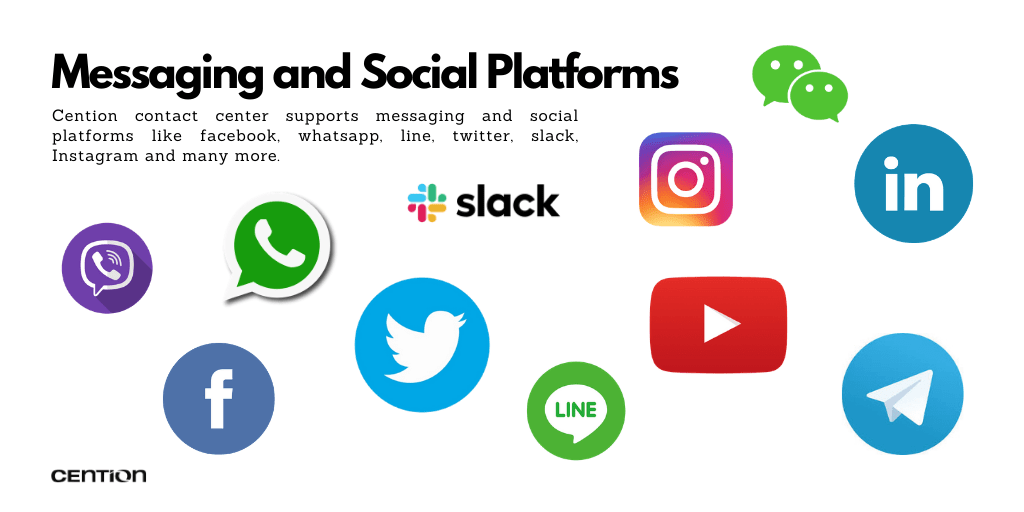Why Messaging and Social Platforms?
In our hyper-connected culture, often people find it far simpler to blast on messaging and social platforms like a Twitter or Facebook rant than to pick up a phone to contact a business when it comes to customer support. This pattern has created numerous nightmares in public affairs with many businesses.
But it’s not just the consumer problem that might trigger a negative news. Bad reaction to messaging and social platforms complaints will often contribute to the loss of customers. Complaining Tweets might not all be viral, yet consumers can still remember whether a company ignores their complaints.
This dramatic change in consumer contact preferences has left several call centres unable to keep up. It can be challenging to decide the right approach to navigate messaging and social platforms when it comes to customer support. Will telecommunications agents be accountable for the problems of messaging and social platforms services? If so, what is the right way to accomplish this interaction, and how do customer support centres keep up?
The time is now: Messaging and Social Platforms
Many companies assume that representatives trained in dealing with clients on the phone might not be the right option for managing messaging and social media enquiries. Every form of communication has its own rules and customs, and certain organisations see the telephone and social as two separate and quite specific skills sets. These businesses strive to establish messaging and social platform customer service with the marketing team. Some can join the messaging and social platforms team alongside the Customer Support Center and make employees accessible to help with online inquiries. Others simply provide the social network team with a series of guidelines for managing support problems and moving them from social media to the contact centre.
If customer support is performed by someone other than a contact centre, those outside teams must contact the support department before answering via messaging and social platforms, which may prolong response time. And delayed response time to customer service is harmful to customer relationships. Consumers expect immediate resolution no matter what platform they prefer to communicate with a business – whether in person, over the phone, by email, or via social media.
Centralized Communication
Many companies assume that the Customer Service Center is moving into a Customer Experience Center, and with the usage of centralised communications systems, they are training their employees across all platforms. These platforms include telephone, email, instant messages, and social media. Centralized systems integrate call, text and online connectivity with cloud-based applications. This software systems not only provide agents with a simpler way to connect with consumers through networks, but also capture and store data derived from these encounters.
Centralized systems allow agents to tailor and prioritise customer care experiences without missing a beat. Automated software sorts social-based customer support communications by hashtags, keywords and category, and then scales them to the right customer service representative so that they can be dealt with easily and effectively.
Maintaining centralised customer support lets businesses improve quality control of customer experience. No matter what platform the customer chooses to use, they can have a consistent experience any time they reach out. This method of quality control can be challenging to manage as messaging and social platforms enquiries are treated in every department other than the customer service department.
%20Messaging%20and%20social%20platform%202.png?width=729&name=(Compress)%20Messaging%20and%20social%20platform%202.png)
Centralized communications networks will also collect valuable data to help organisations monitor service-related patterns, detect method vulnerabilities, and better prepare for the future. Although these systems, all customer experience-based data can be mined and filtered, providing leadership visibility into their customer base.
Messaging and social platform tracking is just half the problem for customer support companies. Without the cohesive tools in operation, it’s too late for an investigator to obtain a conversation. Messaging and social platforms are moving quite rapidly, and internal operations are not normally carried out. It is crucial for companies to recognise warning signs of an issue so that agents can respond efficiently before a report becomes viral.
Only a professional person will recognise when the client is able to chat and when they’re only letting off steam. Algorithms and software may warn an agent that a conversation is going on so only by analysing the conversation background can an agent realise whether or not they should interfere immediately, or whether or not they should enable the conversation to proceed a little longer.
Get the right tools: Messaging and Social Platforms
Solving customer support queries on messaging and social platforms may be a problem, since agents cannot easily continue by answering questions like they do on the phone. Messaging and social media is a public platform, and safety and public policy concerns need to be considered.
In order to prepare customer support departments for this continuous shift of responsibility, businesses would have to invest in proper training and resources to equip agents with the hard and soft skills needed to navigate the current service environment. It could entail a full retraining initiative on the part of current agents, or it may involve reaching out to potential recruits who are experienced in digital communications. No matter where the customer support teams come from, management must realise that agents are no longer saying, “How can I benefit you today?” They’re being asked to wonder who, when where, where, why and how. They need to recognise and appreciate multimedia channels, and they need to be able to answer queries on very public platforms.
%20Messaging%20and%20social%20platform%201.png.png?width=634&name=(Compress)%20Messaging%20and%20social%20platform%201.png.png)
Creating reliable and smooth customer care connections through channels is not an easy task. For certain situations, it can make sense for businesses to retain social network connections with the messaging and social platforms team. Although in most situations, investing in the recruitment of service agents will contribute to a better, more productive customer experience.
Click the link below to request a Demo:
Facebook: https://www.facebook.com/Cention
LinkedIn: https://www.linkedin.com/company/cention-ab
Instagram: https://www.instagram.com/cention.official


